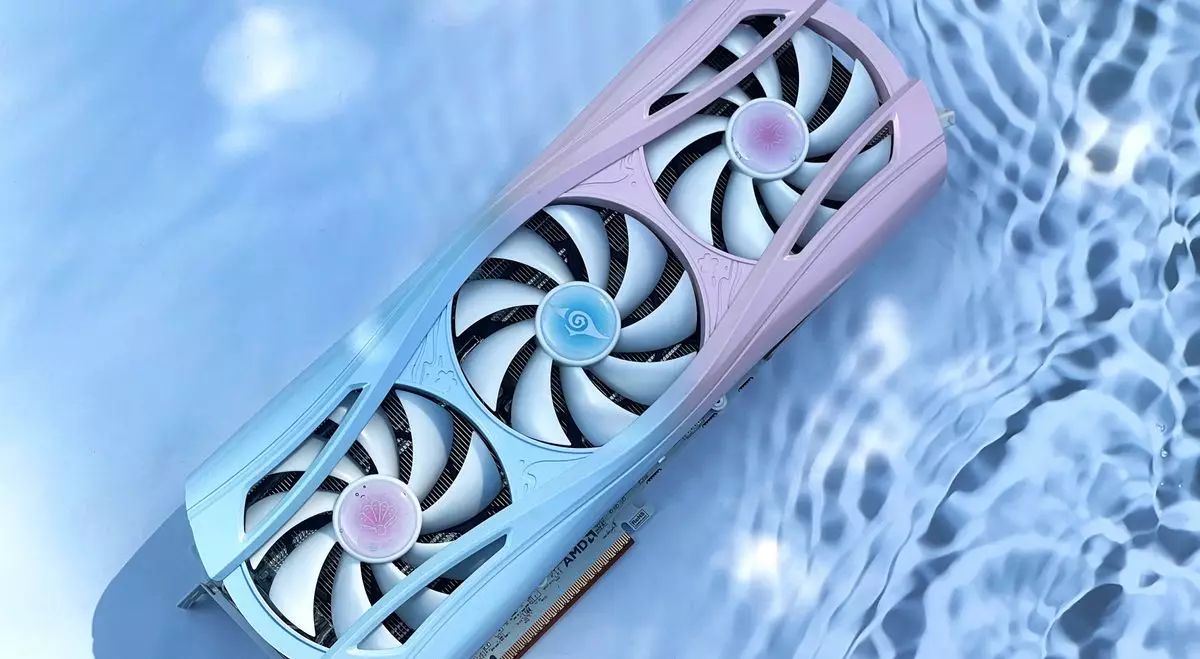The graphics processing unit (GPU) market is in a state of flux, characterized by strong demand coupled with sporadic supply. As NVIDIA’s latest RTX 50-series faces inventory challenges, AMD’s recent launch of the Radeon RX 9070 and 9070 XT cards also sent ripples through the consumer market. Despite the popularity of AMD’s new offerings, availability has become a pressing concern. Recent comments from AMD’s David McAfee shed light on the company’s strategies moving forward in a competitive arena where consumer satisfaction is paramount.
AMD has taken an important step in addressing this scarcity by prioritizing stock replenishment for its partners. McAfee emphasizes that ensuring product availability at reasonable price points is their “priority number one.” However, despite the effort, the facts speak for themselves: even after their launch, the new AMD GPUs continue to experience rapid sell-outs and inflated resale prices. This situation suggests that the company’s measures may need to be more aggressive to keep up with consumer expectations and market dynamics.
Market Fragmentation and Supply Chain Challenges
It’s crucial to acknowledge the nuanced structure of the GPU market, which is markedly different from AMD’s CPU segment. GPUs are manufactured by AMD but sold by a range of add-in board (AIB) partners who design different models, tinker with features, and set diverse pricing strategies. This fragmented supply chain can complicate the rollout of AMD’s products and influence their pricing. In a market where multiple players are involved—from chipset creators to board designers to retailers—instant control over final prices becomes elusive.
McAfee touches upon the inevitable complexity of this landscape, noting that while AMD directly sells CPUs, it relies on third-party manufacturers to deliver customer-ready GPUs. Relinquishing control over final board designs may be a strategic choice by AMD, but it’s a gamble that could backfire if those boards aren’t aligned with consumer expectations or market trends. Price variations for similar designs can confuse buyers, leaving them at the mercy of market conditions rather than actual demand or performance metrics.
The Pervasiveness of Brand Loyalty and Consumer Sentiment
AMD’s market strategy must not only focus on stock availability but also on cultivating brand loyalty. As McAfee points out, the launch of the RX 9070 and 9070 XT was a true milestone, with overwhelming demand across the globe. Yet, strong initial sales must be met with sustained commitment from AMD to ensure that satisfied customers return for future purchases.
Consumer sentiment plays an enormous role in tech markets, and the GPU segment is no exception. Customers are more educated than ever and often seek opinions from reviewers and community forums before making a purchase. If AMD wants to stay ahead, it must ensure that its supply meets rising expectations. It cannot afford to merely stabilize its offerings but must also maintain allure through compelling marketing strategies and consistent availability at competitive prices.
Future Implications and Competitive Pressure
Looking ahead, the real question remains: Can AMD deliver substantial availability to tame prices that have spiraled out of control? Enthusiasts and gamers alike have been waiting for a return to normalcy. Reports indicate that while initial supply was robust, driven in part by a delayed launch meant to accumulate inventory, this situation is fluid. If trends continue, retailers like Newegg may still struggle with insufficient stock of AMD’s new offerings well into the future.
Furthermore, AMD finds itself in direct competition with NVIDIA’s upcoming RTX 5070 series. This growing competition intensifies the urgency for AMD to recalibrate its strategies quickly. If consumers cannot readily purchase AMD GPUs without facing inflated prices, they may easily gravitate toward NVIDIA, even if that also leads to unreasonable costs. Sustained pressure from both consumer desire and competitive offerings will be pivotal in shaping whether AMD can maintain its market traction.
A Call for Transparency and Improvement
In a market hungry for transparency, AMD needs to involve its audience in its journey toward improvement. Communicating stock updates, production schedules, and transparent pricing could help mitigate frustration. The GPU market has suffered for years from supply hiccups and speculative pricing—an approach that alienates consumers. AMD has a unique opportunity to not only fulfill demand but to earn consumer trust by being open about supply chain efforts.
Through these considerations, it’s evident that the road for AMD is fraught with challenges but is also laden with opportunities for growth and resilience. As they push forward, the company’s ability to secure availability while fostering brand loyalty will be the true markers of success in the ever-evolving GPU landscape.

